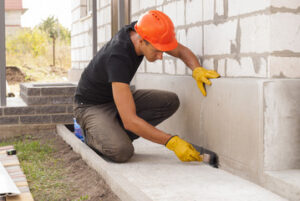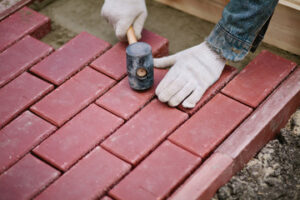In property management, fences serve as essential elements that define boundaries and provide security, privacy, and aesthetic appeal. A fence company plays a crucial role in meeting these diverse needs, offering a range of solutions tailored to the specific requirements of residential, commercial, and industrial clients. This essay explores the multifaceted role of a fence company in providing fencing solutions, encompassing aspects such as functionality, design, materials, installation processes, and customer service. Contact Fence Companies Charlotte now!

Functionality:
One of the primary functions of a fence is to provide security and delineate property lines. A professional fence company excels in understanding and meeting these functional requirements. Whether it’s installing high-security fencing for industrial facilities or decorative fences for residential properties, the expertise of a fence company ensures that the client’s needs are addressed effectively. Moreover, these companies often conduct thorough assessments of the property to recommend the most suitable fencing solutions, taking into account factors such as terrain, property layout, and desired level of security.
Design and Aesthetics:
In addition to functionality, fences contribute significantly to the visual appeal of a property. A well-designed fence can enhance the overall aesthetics, complementing the architectural style and landscaping features. A fence company typically offers a variety of design options to cater to diverse client preferences. These options may include traditional designs such as picket fences or more modern styles such as sleek aluminum or steel fencing. Furthermore, many fence companies provide customization services, allowing clients to personalize their fences with decorative elements, colors, and finishes. By collaborating with clients and leveraging their expertise in design principles, fence companies ensure that the final product not only meets functional requirements but also enhances the beauty of the property.
Materials:
The choice of materials is a crucial aspect of fence design, impacting factors such as durability, maintenance requirements, and aesthetic appeal. A professional fence company offers a wide range of materials to suit different needs and budgets. Common fencing materials include wood, vinyl, aluminum, steel, chain link, and composite materials. Each material has its unique characteristics and benefits. For example, wood fences are valued for their natural beauty and versatility, while vinyl fences offer low maintenance and durability. Aluminum and steel fences are known for their strength and security, making them ideal for commercial and industrial applications. By educating clients about the characteristics and pros and cons of each material, fence companies help them make informed decisions that align with their preferences and budgets.
Installation Processes:
The installation process is a critical aspect of fence construction, influencing the durability, stability, and appearance of the final product. A professional fence company employs trained and experienced installers who follow industry best practices to ensure quality workmanship. This includes proper site preparation, accurate measurements, precise placement of posts and panels, and attention to detail during assembly and finishing. Additionally, fence companies use specialized equipment and tools to streamline the installation process and minimize disruptions to the client’s property. By adhering to high standards of craftsmanship and professionalism, fence companies deliver fences that stand the test of time and exceed client expectations.
Customer Service:
Exceptional customer service is a hallmark of a reputable fence company. From the initial consultation to the final installation and beyond, fence companies prioritize customer satisfaction and strive to exceed expectations at every step of the process. This includes providing clear communication, timely responses to inquiries, transparent pricing, and flexible scheduling. Moreover, reputable fence companies stand behind their workmanship and products, offering warranties and guarantees to provide peace of mind to clients. By building strong relationships based on trust, integrity, and reliability, fence companies foster loyalty and referrals, driving their long-term success in the industry.
Conclusion:
In conclusion, a fence company plays a vital role in providing fencing solutions that enhance properties’ security, privacy, and aesthetics. By offering a wide range of functional and decorative options, educating clients about materials and design considerations, delivering quality craftsmanship during installation, and providing exceptional customer service, fence companies contribute to the overall well-being and satisfaction of property owners. As the demand for fencing solutions continues to grow, the importance of professional fence companies in shaping and securing boundaries cannot be overstated.
In the realm of property ownership and management, the significance of well-designed and sturdy fencing cannot be overstated. A fence not only serves to demarcate boundaries but also enhances security, privacy, and aesthetics. Professional fence companies play a pivotal role in meeting these needs, offering a diverse array of fencing solutions tailored to the specific requirements of their clients. This essay delves into the multifaceted dynamics and impact of a professional fence company, exploring its role in providing functional, aesthetically pleasing, and durable fencing solutions.
Understanding the Needs:
Before delving into the intricacies of fencing solutions, it’s crucial to understand the diverse needs of property owners. Residential clients may seek fencing solutions primarily for privacy, aesthetic enhancement, and pet containment. On the other hand, commercial and industrial clients may prioritize security, access control, and perimeter delineation. A professional fence company adeptly navigates these varied needs, offering tailored solutions that strike a balance between functionality and aesthetics.
Functional Excellence:
At the core of every fencing solution lies functionality. A professional fence company excels in providing robust and reliable fencing options that meet the specific needs of their clients. Whether it’s installing chain-link fences for industrial complexes, wooden fences for residential properties, or ornate wrought iron fences for commercial establishments, the expertise of a professional fence company ensures that functional requirements are met with precision. Moreover, these companies employ advanced techniques and high-quality materials to ensure durability and longevity, thereby offering peace of mind to their clients.
Aesthetic Appeal:
Beyond functionality, fences contribute significantly to the overall aesthetic appeal of a property. A well-designed fence enhances the visual appeal of the property, complementing its architectural style and landscaping features. Professional fence companies understand the importance of aesthetics and offer a wide range of design options to cater to diverse client preferences. From traditional picket fences to modern and sleek designs, these companies leverage their expertise in design principles to create fences that not only serve practical purposes but also elevate the overall aesthetic appeal of the property.
Materials Selection:
The choice of materials is a crucial aspect of fencing solutions, influencing factors such as durability, maintenance requirements, and aesthetic appeal. Professional fence companies offer a diverse range of materials to suit the specific needs and preferences of their clients. Common fencing materials include wood, vinyl, aluminum, steel, and composite materials. Each material has its unique characteristics and benefits, and professional fence companies guide their clients in making informed decisions based on factors such as budget, maintenance preferences, and desired aesthetics.
Installation Expertise:
The installation process is a critical determinant of the quality and longevity of a fence. Professional fence companies employ skilled and experienced installers who are proficient in industry best practices. From accurate measurements to precise placement of posts and panels, these installers ensure that every aspect of the installation process is executed with meticulous attention to detail. Moreover, professional fence companies invest in state-of-the-art equipment and tools to streamline the installation process, thereby minimizing disruptions to the client’s property and ensuring the timely completion of the project.
Durability and Sustainability: By prioritizing sustainable materials and construction methods, fence companies ensure that their fences are not only durable but also environmentally friendly. Recycled vinyl fences, for instance, offer the same strength and longevity as traditional vinyl fences while reducing the demand for virgin materials. Likewise, bamboo fences are lauded for their rapid regrowth and renewable properties, making them an ideal choice for eco-conscious consumers.
Community Engagement: In addition to their commitment to sustainability, fence companies actively engage with the community through various initiatives. Whether it’s sponsoring local environmental events or partnering with nonprofit organizations on community improvement projects, the company demonstrates its dedication to making a positive impact beyond the realm of fencing. By fostering a sense of community and environmental stewardship, fence companies not only enhance their brand reputation but also inspire others to embrace sustainable practices.








